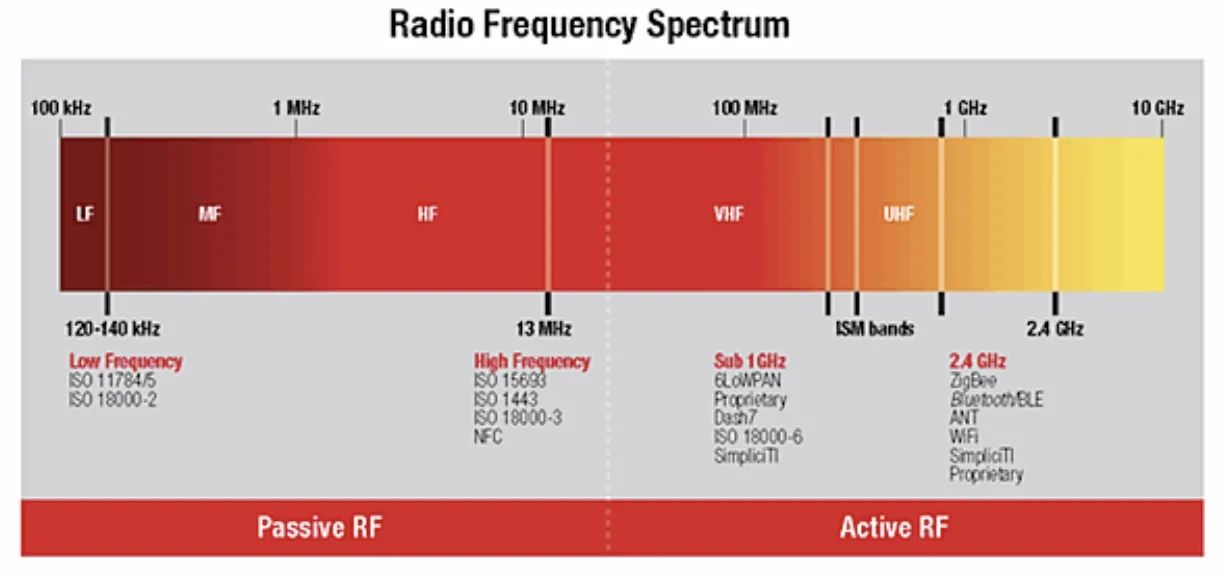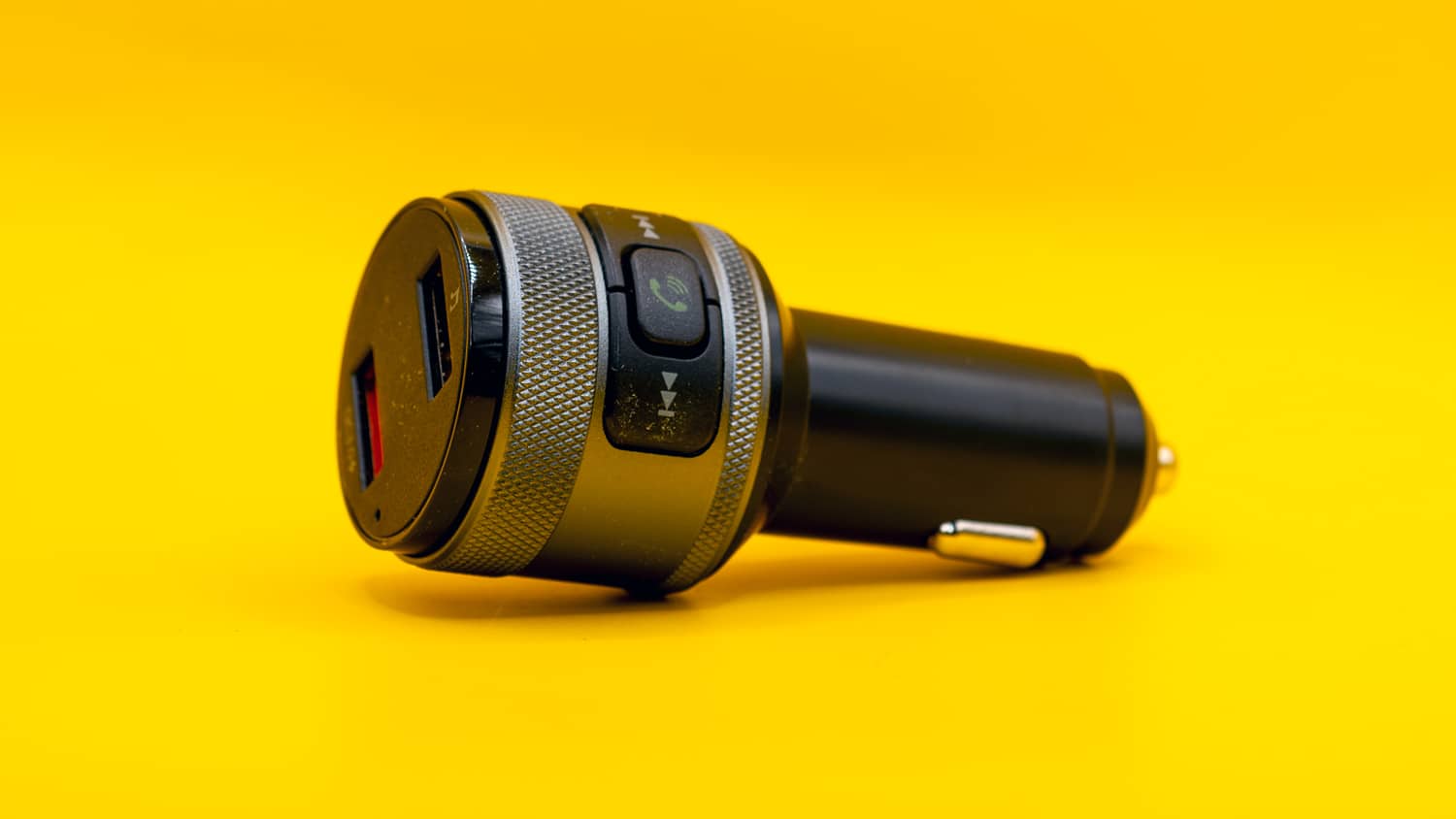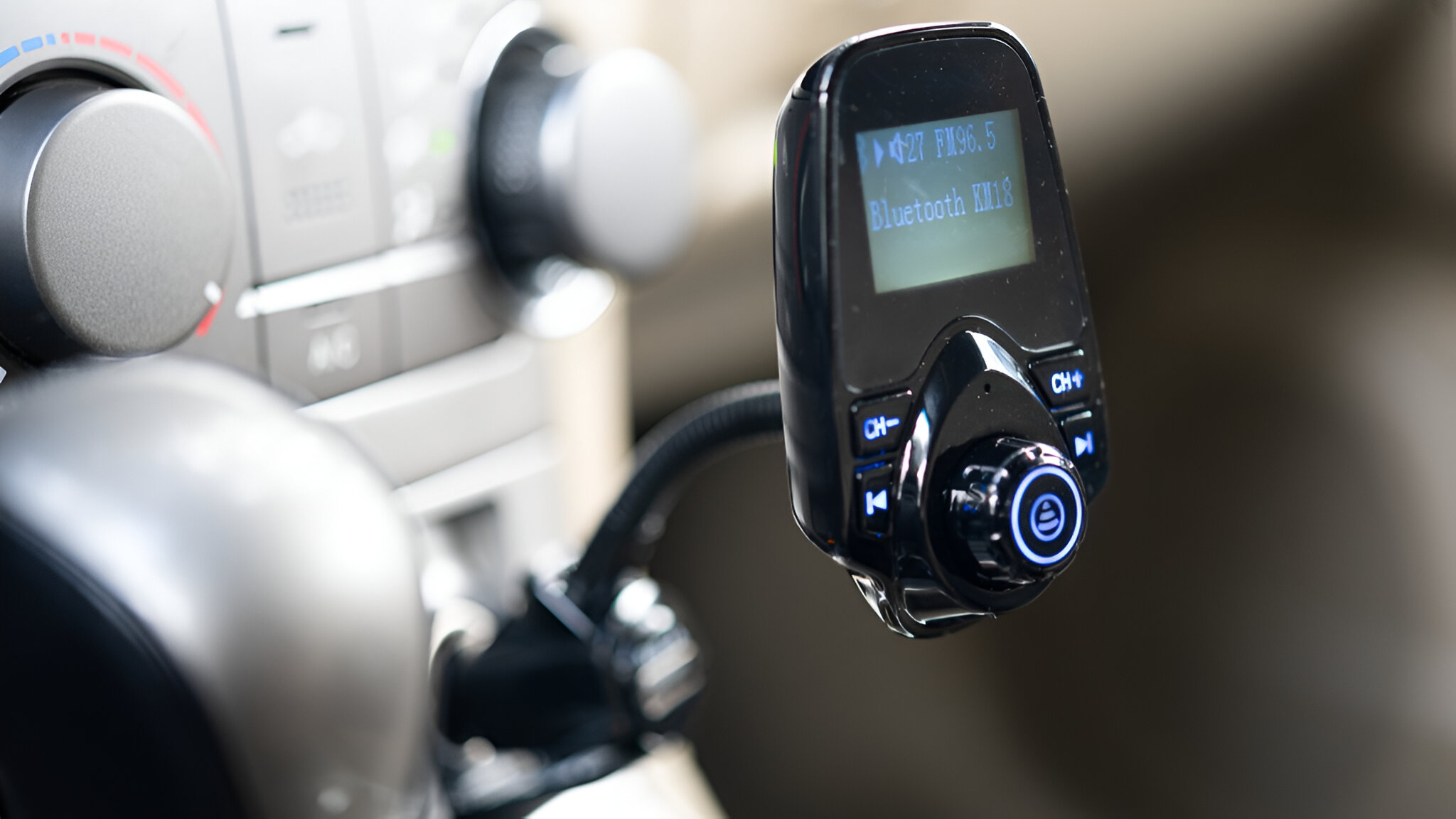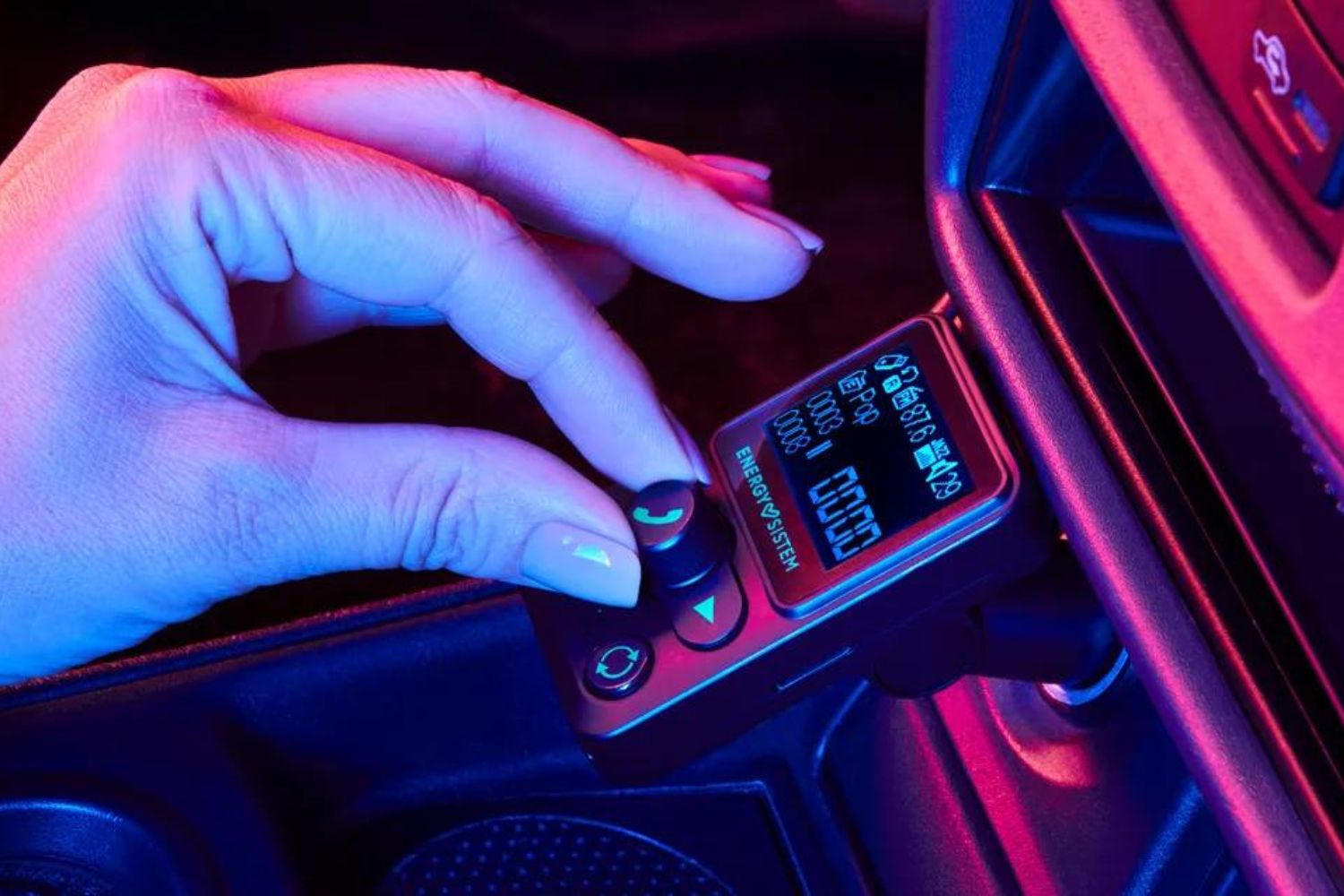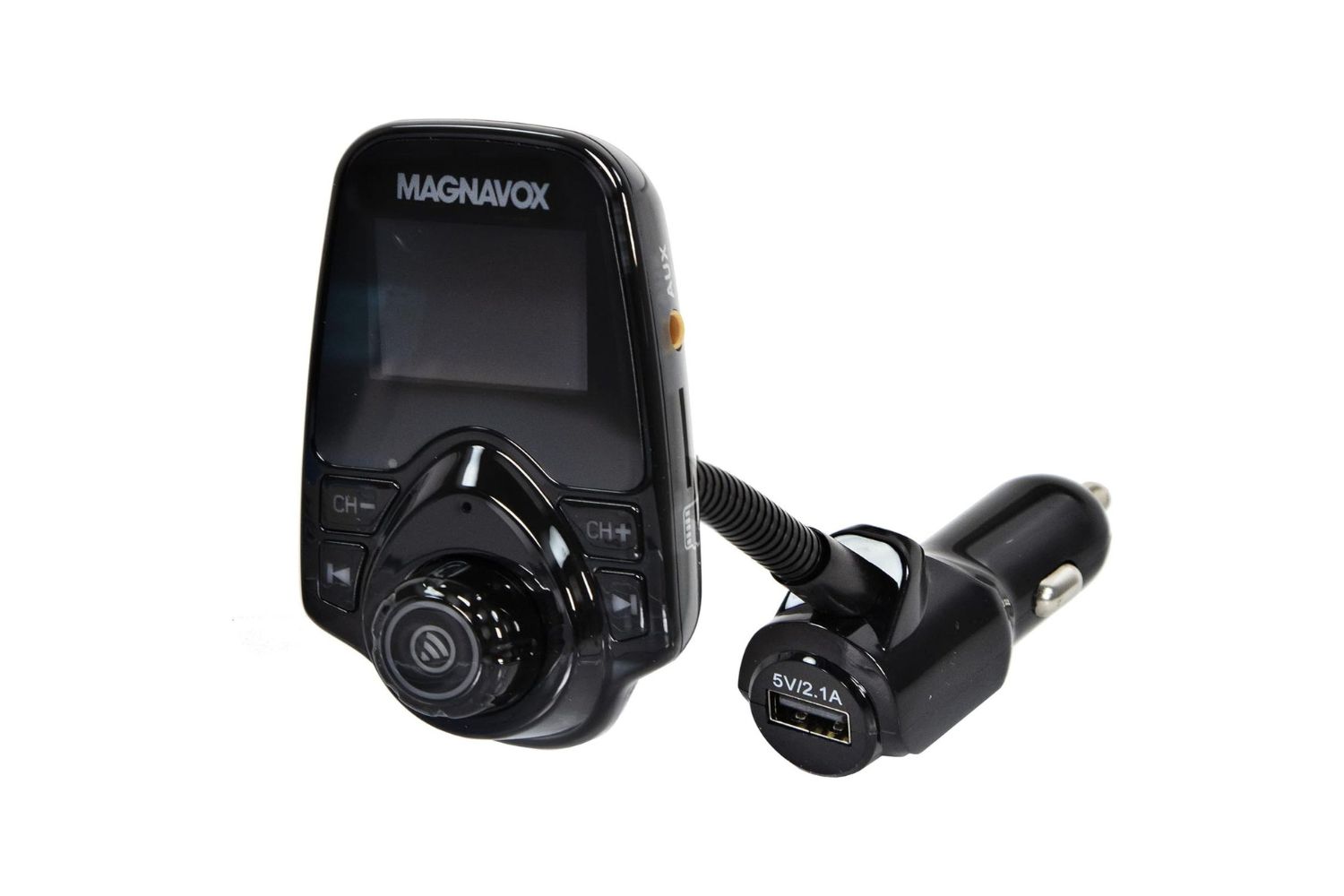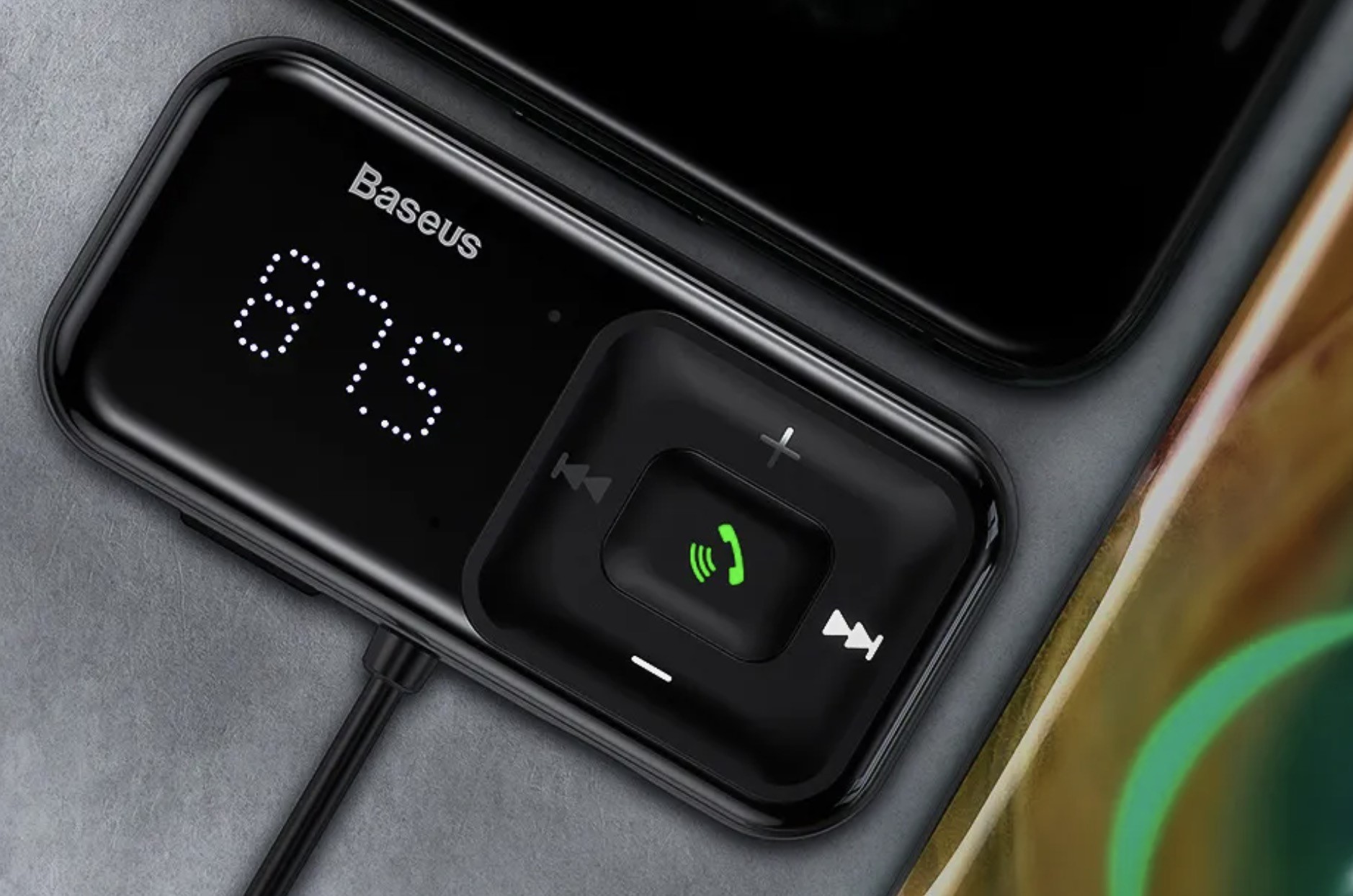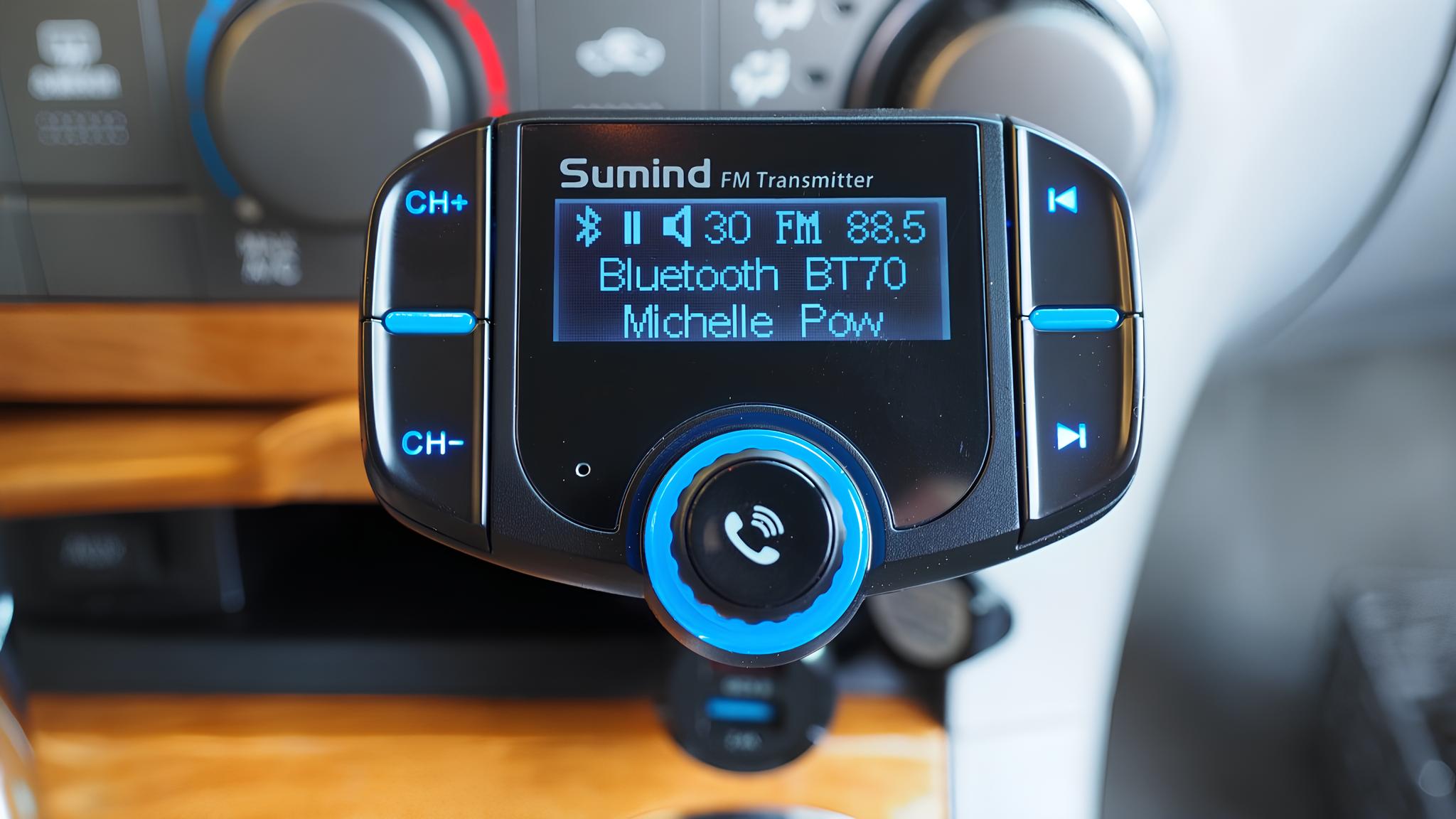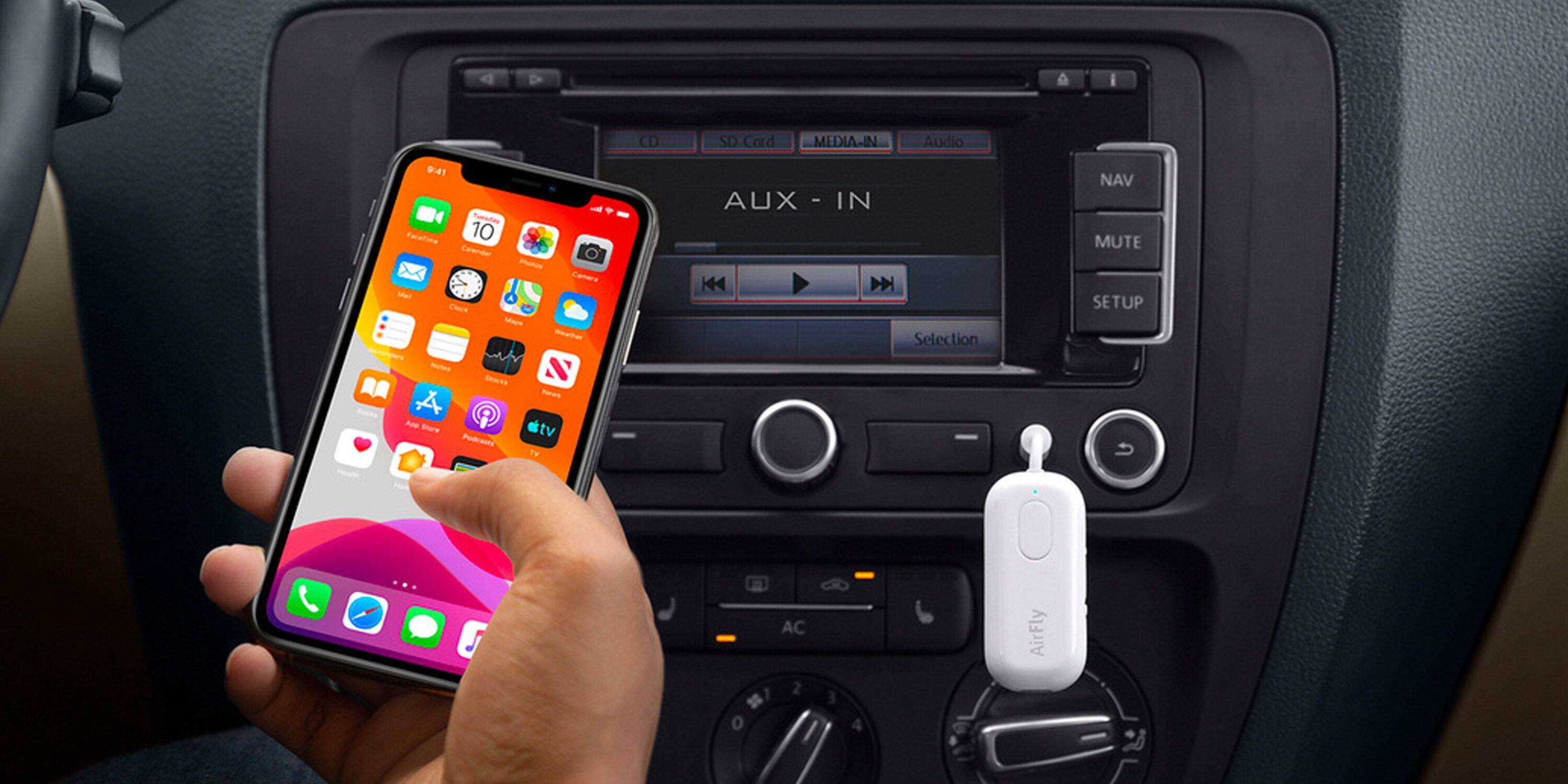Introduction
Welcome to the digital age, where wireless communication has become an essential part of our everyday lives. From smartphones and tablets to wearables and smart home devices, we rely on wireless technologies to stay connected and make our lives more convenient. One such technology that has revolutionized wireless connectivity is Bluetooth.
Bluetooth technology allows devices to communicate wirelessly over short distances, eliminating the need for cumbersome cables and wires. Whether it’s streaming music through a Bluetooth speaker or transferring files between devices, Bluetooth has become ubiquitous in our modern world.
But have you ever wondered how Bluetooth actually works? Or what frequencies it operates on? In this article, we will delve into the world of Bluetooth and explore the frequencies that enable this technology to function.
Before we dive into the technicalities, it’s important to have a basic understanding of wireless communication. Wireless communication involves the transmission of data between devices without the use of physical wired connections. Instead, it utilizes radio waves to transmit information.
Now, let’s take a closer look at Bluetooth technology and the frequencies it operates on.
Understanding wireless communication
Wireless communication is a method of transferring information between devices without the need for physical connections. It relies on the transmission of electromagnetic waves, such as radio waves, to carry data from one device to another.
The process of wireless communication involves a transmitter and a receiver. The transmitter converts data into electromagnetic waves, which are then transmitted through the air or space. The receiver captures these waves and converts them back into usable data.
There are different types of wireless communication technologies, each operating on specific frequency bands. These bands are designated ranges of frequencies within the electromagnetic spectrum, which is the continuum of all electromagnetic waves.
Wireless communication encompasses a wide range of applications, including cellular networks, Wi-Fi, NFC (Near Field Communication), and of course, Bluetooth. Each of these technologies serves different purposes and operates on different frequency bands.
Now that we have a general understanding of wireless communication, let’s focus on Bluetooth technology and its role in enabling wireless connectivity.
Bluetooth technology overview
Bluetooth technology is a wireless communication standard that allows devices to connect and exchange data over short distances. It was first developed by Ericsson in the 1990s and has since become a widely adopted technology in various industries.
One of the key features of Bluetooth is its ability to operate on low power, making it ideal for battery-powered devices like smartphones, headphones, and smartwatches. It offers a simple and reliable way to connect different devices without the need for complex setup processes.
Bluetooth uses a frequency-hopping spread spectrum technique to transmit data. This means that it rapidly switches between different frequencies within a designated frequency band. By hopping between frequencies, Bluetooth can reduce interference from other wireless devices and maintain a stable connection.
Bluetooth technology is divided into different versions or “profiles,” each with its own set of features and capabilities. The most common version of Bluetooth is Bluetooth Classic or just “Bluetooth,” which is suitable for audio streaming, file transfer, and general data communication.
In addition to Bluetooth Classic, there is Bluetooth Low Energy (LE), also known as Bluetooth Smart, which is designed for low-power applications like fitness trackers, smart sensors, and other Internet of Things (IoT) devices. Bluetooth LE consumes significantly less power than Bluetooth Classic, making it ideal for devices that require long battery life.
Bluetooth technology has continued to evolve over the years, with newer versions offering enhanced features like faster data transfer rates, longer range, and improved security. Bluetooth 5.0, for example, introduced longer range capabilities, allowing devices to connect over distances of up to 800 feet (240 meters).
With its versatility, low power consumption, and widespread compatibility, Bluetooth technology has become an integral part of our connected world, enabling seamless wireless communication between devices in various applications.
Frequency bands used by Bluetooth
Bluetooth technology operates within specific frequency bands allocated for industrial, scientific, and medical (ISM) applications. The most commonly used frequency band for Bluetooth is the 2.4 GHz ISM band.
The 2.4 GHz ISM (Industrial, Scientific, Medical) band is a globally available unlicensed frequency band designated for various wireless applications. It is divided into multiple channels, and Bluetooth utilizes a subset of these channels for its operation.
Bluetooth devices use the 2.4 GHz frequency band because it offers several advantages. This band is globally harmonized, meaning that it is available for use across different countries without the need for frequency coordination or licensing. Additionally, it provides sufficient bandwidth for Bluetooth applications while still being able to penetrate obstacles like walls and other materials.
However, using the 2.4 GHz frequency band also poses some challenges. This band is shared with other devices and technologies, such as Wi-Fi routers, cordless phones, and microwaves. This can lead to interference and potential performance issues for Bluetooth devices.
To mitigate these challenges, Bluetooth technology uses a technique called frequency hopping. Instead of continuously transmitting on a single frequency, Bluetooth devices hop between different frequencies within the 2.4 GHz band. This hopping pattern is controlled by a master device and synchronized with other connected devices, ensuring that they are always transmitting and receiving on the same frequency.
Frequency hopping provides two key benefits. First, it helps to minimize interference from other wireless devices operating in the same frequency band. By rapidly switching between frequencies, Bluetooth devices can avoid congestion and maintain a stable connection. Second, it enhances security by making it challenging for eavesdroppers to intercept or jam the Bluetooth signal.
Despite the potential for interference and congestion in the 2.4 GHz band, Bluetooth technology’s frequency hopping mechanism enables reliable wireless communication in a wide range of devices.
4GHz ISM band
The 2.4 GHz ISM (Industrial, Scientific, Medical) band is a globally available frequency band that is widely used for various wireless applications, including Bluetooth. This band spans from 2.400 to 2.4835 gigahertz (GHz) and is divided into multiple channels for different wireless technologies.
The 2.4 GHz ISM band is particularly attractive for wireless communication due to its availability and global harmonization. It is unlicensed, meaning that no specific authorization or fees are required to use this frequency band. This makes it easy for manufacturers to incorporate Bluetooth technology into their devices without any legal or regulatory obstacles.
In the 2.4 GHz band, Bluetooth has 79 channels with a bandwidth of 1 MHz each. However, not all of these channels are dedicated exclusively to Bluetooth. Some channels are used by other technologies like Wi-Fi, Zigbee, and microwave ovens, which can potentially cause interference with Bluetooth devices.
For efficient communication, Bluetooth utilizes a frequency hopping spread spectrum technique. This technique involves rapidly switching between available channels within the 2.4 GHz band. Bluetooth devices hop between channels at a rate of 1600 hops per second, ensuring that interference from other wireless devices is minimized.
While the use of the 2.4 GHz ISM band enables widespread compatibility and availability, it also presents some challenges. The band is crowded, with many devices and technologies operating within it simultaneously. This congestion can lead to interference and reduced performance for Bluetooth devices, especially in densely populated areas or in environments with many wireless devices.
Therefore, to ensure a reliable and high-quality Bluetooth connection, it is important to choose devices that support technologies like Adaptive Frequency Hopping (AFH). AFH monitors the spectrum and dynamically adjusts the hopping pattern to avoid busy channels, prioritizing channels with less interference for communication.
Overall, the 2.4 GHz ISM band is a vital component for Bluetooth technology, providing a globally available and unlicensed frequency band for wireless communication. Although it poses challenges due to potential interference, Bluetooth’s frequency hopping mechanism helps maintain a stable and interference-free connection within this crowded band.
Challenges of operating in the 2.4GHz band
Operating within the 2.4 GHz ISM band presents several challenges for Bluetooth technology due to the crowded nature of this frequency band. These challenges can impact the performance and reliability of Bluetooth devices.
One of the primary challenges is interference from other wireless devices operating in the same frequency band. The 2.4 GHz band is shared among various technologies, including Wi-Fi routers, cordless phones, baby monitors, and microwave ovens. The simultaneous operation of these devices can result in signal interference, leading to degraded Bluetooth performance.
Interference can manifest in several ways. In the presence of Wi-Fi networks, for example, the overlapping channels can cause contention, reducing the effective range and data throughput of Bluetooth devices. Similarly, microwave ovens can emit strong electromagnetic waves in the 2.4 GHz band, which can create temporary disruptions or interference for Bluetooth communication.
Another challenge is congestion caused by the increasing number of Bluetooth devices in use. As more devices rely on Bluetooth for wireless connectivity, the available channels within the 2.4 GHz band can become crowded. This congestion can result in increased interference and reduce the overall quality of the Bluetooth connection.
Operational challenges may also arise in environments with a high density of Bluetooth devices. In crowded areas such as office buildings, shopping malls, or conferences, the presence of multiple Bluetooth devices simultaneously transmitting and receiving data can create significant interference, hindering the performance and reliability of Bluetooth connections.
To address these challenges, Bluetooth technology implements various measures. One such measure is Adaptive Frequency Hopping (AFH), which dynamically avoids channels with interference. By intelligently selecting channels with less interference, Bluetooth devices can maintain a more stable and reliable connection.
Additionally, advancements in Bluetooth technology, such as Bluetooth 5.0 and later versions, have introduced enhanced coexistence mechanisms. These mechanisms optimize the use of available channels and mitigate interference from other wireless technologies, further improving Bluetooth performance in challenging environments.
Overall, while operating in the 2.4 GHz ISM band poses challenges for Bluetooth devices due to interference and congestion, the implementation of technologies like AFH and continuous advancements in Bluetooth standards are continuously improving the robustness and reliability of Bluetooth connections.
Frequency hopping in Bluetooth
Frequency hopping is a key feature of Bluetooth technology that enables it to overcome interference and maintain a reliable wireless connection. It is a technique where Bluetooth devices rapidly switch between different frequencies within the designated frequency band, such as the 2.4 GHz ISM band.
The frequency hopping process involves dividing the available frequency band into numerous smaller channels. Bluetooth devices hop between these channels in a predetermined pattern that follows a specific algorithm. This hopping pattern is controlled by a master device, which synchronizes the hopping sequence with other connected devices.
The frequency hopping algorithm used in Bluetooth is based on a pseudorandom sequence. This sequence determines the order and duration of frequency hops. By using a pseudorandom sequence, Bluetooth devices avoid predictable patterns and make it difficult for unauthorized devices to intercept or interfere with the communication.
The hopping rate in Bluetooth is typically 1600 hops per second. This means that Bluetooth devices switch between frequencies at a rapid pace, allowing them to quickly move away from congested or noisy channels. This agility helps to minimize the impact of interference and maintain a strong and stable connection.
Frequency hopping brings several advantages to Bluetooth technology. First, it mitigates interference by rapidly changing frequencies. If one frequency channel experiences interference or becomes congested, Bluetooth devices swiftly switch to a different channel, reducing the effects of interference and enhancing overall performance.
Second, frequency hopping makes Bluetooth more resilient against eavesdropping and unauthorized access. Since the hopping sequence is synchronized between devices, it becomes difficult for an outsider to intercept or decipher the data being transmitted. Additionally, the hopping pattern itself adds a layer of security, as unauthorized devices would need to precisely replicate the hopping sequence to gain access.
Moreover, frequency hopping extends the range of Bluetooth devices. By switching frequencies, Bluetooth devices can take advantage of frequency channels with better transmission conditions, allowing for improved signal strength and longer communication distances.
Overall, frequency hopping is a fundamental aspect of Bluetooth technology, enabling it to overcome interference, enhance security, and extend the range of wireless connections. The ability to rapidly switch between frequencies is a key element that ensures reliable and robust communication in various Bluetooth-enabled devices and applications.
Advantages of using frequency hopping
The use of frequency hopping in wireless communication, such as Bluetooth, offers several advantages that contribute to the reliability and efficiency of the technology. Let’s explore some of the key advantages of using frequency hopping:
Minimizes interference: By rapidly switching between different frequencies within the designated frequency band, frequency hopping helps to minimize interference from other wireless devices operating in the same band. This allows Bluetooth devices to maintain a strong and stable connection, even in environments with high levels of electromagnetic interference.
Enhances security: Frequency hopping adds a layer of security to wireless communication. Since the frequency hopping pattern is synchronized between devices, it becomes challenging for unauthorized devices to intercept or jam the communication. The hopping sequence acts as a pseudorandom key, making it difficult for eavesdroppers to decipher the transmitted data.
Improves coexistence: In crowded wireless environments where multiple devices are simultaneously transmitting signals, frequency hopping helps to improve coexistence. By rapidly switching between frequencies, Bluetooth devices can avoid congested or noisy channels and find clear ones for communication. This reduces the chances of performance degradation and interference from other nearby devices.
Extends range: Frequency hopping can extend the effective range of wireless communication. By hopping between frequencies, Bluetooth devices can take advantage of frequency channels that offer better transmission conditions, such as lower levels of interference or better signal propagation characteristics. This can result in improved signal strength and the ability to maintain reliable connections over longer distances.
Enables multipath mitigation: Wireless signals can encounter reflections and diffraction, causing multipath propagation. Frequency hopping helps to mitigate the effects of multipath propagation by hopping to different frequencies. This allows the receiving device to select the best quality signal path, minimizing the impact of signal degradation caused by multipath propagation.
Optimizes utilization of the frequency band: Frequency hopping allows for efficient utilization of the available frequency band. Instead of dedicating a single frequency for communication, frequency hopping enables the use of multiple frequencies. This improves spectral efficiency and minimizes the chances of frequency conflicts, enabling more devices to operate within the same frequency band without causing interference.
Overall, frequency hopping in wireless communication like Bluetooth offers significant advantages, including minimal interference, enhanced security, improved coexistence, extended range, multipath mitigation, and optimized spectral efficiency. These advantages contribute to the reliable and efficient operation of various wireless devices and applications.
Frequency ranges used in Bluetooth
Bluetooth technology operates within specific frequency ranges, which vary depending on the version or profile being used. Let’s explore the different frequency ranges used in Bluetooth:
Bluetooth 1.0 to 3.0 frequency range: The earliest versions of Bluetooth, including Bluetooth 1.0, 2.0, and 3.0, operate within the 2.4 GHz ISM band. This frequency range spans from 2.400 to 2.4835 gigahertz (GHz) and is divided into multiple channels. These versions of Bluetooth utilize frequency hopping to mitigate interference and maintain stable connections.
Bluetooth 4.0 and above frequency range: Starting from Bluetooth 4.0, the technology introduced a feature called “Bluetooth Smart.” Bluetooth Smart typically operates within the same 2.4 GHz ISM band as previous versions of Bluetooth. However, Bluetooth Smart devices can also operate in a wider frequency range of 2.402 to 2.480 GHz, providing more flexibility in channel selection.
Bluetooth low energy (LE) frequency range: Bluetooth low energy (LE), also known as Bluetooth Smart, utilizes a specific frequency range known as the “Bluetooth LE frequency band.” This band operates within the 2.4 GHz ISM spectrum, specifically within the narrower range of 2.402 to 2.4825 GHz. Bluetooth LE operates on 40 channels, each with a bandwidth of 2 MHz.
The Bluetooth LE frequency range was introduced to cater to low-power applications, such as fitness trackers, smart sensors, and other Internet of Things (IoT) devices. It offers significant power savings compared to classic Bluetooth, making it ideal for devices that require long battery life.
The channel bandwidths and the number of available channels may vary depending on the Bluetooth version or profile being used. However, all Bluetooth versions operate within the unlicensed 2.4 GHz ISM band, allowing for global compatibility and interoperability.
It’s important to note that Bluetooth technology is continuously evolving, with newer versions introducing improvements and enhancements to the frequency ranges and operational capabilities. Bluetooth 5.0, for example, offers longer range capabilities and higher data transfer rates compared to previous versions.
Overall, the frequency ranges used in Bluetooth encompass the 2.4 GHz ISM band and, in the case of Bluetooth Smart, a slightly wider range within that band. These frequency ranges provide the foundation for wireless connectivity and communication in various Bluetooth-enabled devices and applications.
Bluetooth 1.0 to 3.0 frequency range
The earlier versions of Bluetooth, including Bluetooth 1.0, 2.0, and 3.0, operate within the 2.4 GHz Industrial, Scientific, and Medical (ISM) band. This frequency range spans from 2.400 to 2.4835 gigahertz (GHz) and is divided into multiple channels, each with a bandwidth of 1 megahertz (MHz).
Bluetooth utilizes frequency-hopping spread spectrum (FHSS) technology in this frequency range. FHSS involves hopping between available channels within the 2.4 GHz band at a rapid pace. By rapidly switching between frequencies, Bluetooth devices can minimize interference from other wireless devices and maintain stable connections.
Bluetooth 1.0 to 3.0 operate on 79 channels within the 2.4 GHz ISM band, and their frequency-hopping pattern follows a specific algorithm. The hopping sequence is predetermined and synchronized between Bluetooth devices, ensuring that they hop in the same pattern to maintain communication.
Each Bluetooth device in a connection typically operates as both a transmitter and a receiver. The master device initiates the hopping sequence and controls the timing for all devices in the network to ensure synchronization.
In the 2.4 GHz ISM band, various other wireless technologies and devices also operate, including Wi-Fi networks, cordless phones, and microwave ovens. Sharing this frequency band can lead to potential interference for Bluetooth devices.
To mitigate interference and maintain reliable communication, Bluetooth technology uses adaptive frequency hopping (AFH). AFH continuously monitors the spectrum for interference from other devices and dynamically avoids congested or noisy channels. By avoiding channels with high levels of interference, Bluetooth devices can maintain a higher quality of communication and minimize the impact of signal degradation.
Overall, the 2.4 GHz ISM band is a globally available frequency range that facilitates wireless communication in Bluetooth versions 1.0 to 3.0. The use of frequency hopping within this band allows Bluetooth devices to navigate interference and maintain stable connections, ensuring seamless communication between devices.
Bluetooth 4.0 and above frequency range
Starting from Bluetooth 4.0, the frequency range used by Bluetooth expands to include a wider spectrum within the 2.4 GHz Industrial, Scientific, and Medical (ISM) band. Bluetooth 4.0 and above typically operate within the 2.402 to 2.480 gigahertz (GHz) range.
Bluetooth 4.0, also known as Bluetooth Low Energy (LE) or Bluetooth Smart, utilizes the same 2.4 GHz ISM band as earlier versions of Bluetooth but introduces more flexibility in terms of channel selection. This wider frequency range provides additional channels for Bluetooth Smart devices to operate on.
The available frequency range within Bluetooth 4.0 and above allows devices to avoid congested or noisy channels. By utilizing a wider spectrum, Bluetooth Smart devices can navigate around interference and find clear frequency channels for communication, resulting in more reliable connections.
Bluetooth Smart devices can operate on 40 channels, each with a bandwidth of 2 megahertz (MHz). These channels are spaced 2 MHz apart within the 2.402 to 2.480 GHz frequency range.
Bluetooth Smart is designed for low-power applications, such as fitness trackers, smart sensors, and other Internet of Things (IoT) devices. By expanding the frequency range, Bluetooth Smart devices can offer improved performance in terms of power efficiency while maintaining backward compatibility with devices utilizing earlier versions of Bluetooth.
Despite the wider frequency range, Bluetooth 4.0 and above devices also incorporate frequency hopping spread spectrum (FHSS) technology. This technique allows devices to switch frequencies rapidly within the available channels, minimizing interference and maintaining reliable communication.
The expansion of the frequency range in Bluetooth 4.0 and above contributes to the enhanced capability and versatility of Bluetooth technology. It enables devices to operate on a broader spectrum, minimizing the impact of interference and providing improved performance for various applications.
It’s important to note that the specific frequency channels and bandwidths may vary depending on the Bluetooth version, regional regulations, and device specifications. Bluetooth technology continues to evolve, with newer versions introducing advancements in frequency range utilization and other features.
Bluetooth low energy (LE) frequency range
The Bluetooth Low Energy (LE), also known as Bluetooth Smart, technology operates within a specific frequency range designated as the “Bluetooth LE frequency band.” This frequency band falls within the 2.4 GHz Industrial, Scientific, and Medical (ISM) spectrum.
The Bluetooth LE frequency range spans from 2.402 to 2.480 gigahertz (GHz) within the 2.4 GHz ISM band. It offers 40 channels, each with a bandwidth of 2 megahertz (MHz). These channels are spaced 2 MHz apart, allowing Bluetooth LE devices to operate concurrently without causing interference.
Bluetooth LE is designed for low-power applications, such as fitness trackers, smartwatches, health monitoring devices, and various Internet of Things (IoT) devices. It offers notable power savings compared to classic Bluetooth, making it suitable for devices that require longer battery life.
The use of the Bluetooth LE frequency band provides several advantages for low-power applications. The limited bandwidth of each channel enables more efficient power consumption, as Bluetooth LE devices only need to transmit and receive data within a narrower frequency range. This optimized operation contributes to extended battery life.
Furthermore, Bluetooth LE devices make use of adaptive frequency hopping (AFH) to ensure reliable communication. AFH dynamically avoids channels with interference, selecting clear channels to maintain high-quality connections. This mechanism helps Bluetooth LE devices overcome potential interference challenges within the 2.4 GHz ISM band.
The Bluetooth LE frequency range is globally available and unlicensed, allowing for seamless interoperability across different countries without the need for additional licenses or regulatory approvals. This ease of deployment has facilitated the widespread adoption of Bluetooth LE in various devices and industries.
While Bluetooth LE is optimized for low-power applications, it still maintains compatibility with classic Bluetooth technology. This interoperability allows Bluetooth LE devices to communicate with both Bluetooth LE and older Bluetooth devices, expanding the range of potential connections.
It’s important to note that the specific frequency channels within the Bluetooth LE frequency band may vary depending on regional regulations and device specifications. Manufacturers ensure their Bluetooth LE devices comply with the respective regulations to ensure worldwide adherence to the frequency band allocations.
In summary, the Bluetooth LE frequency range, operating within the 2.4 GHz ISM band, provides a dedicated spectrum for low-power applications. Its limited bandwidth, together with the use of adaptive frequency hopping, enables optimized power consumption and reliable communication in various Bluetooth LE devices.
Conclusion
Bluetooth technology has become an integral part of our daily lives, providing seamless wireless connectivity for a wide range of devices. Understanding the frequency bands used in Bluetooth is essential to grasp the underlying principles that enable this technology to function.
Bluetooth operates within the 2.4 GHz Industrial, Scientific, and Medical (ISM) band, which offers a globally available and unlicensed frequency range for wireless communication. This frequency band is shared among various devices and technologies, leading to potential challenges, such as interference and congestion.
To overcome these challenges, Bluetooth utilizes frequency hopping spread spectrum (FHSS) technology. By rapidly switching between different frequencies within the available channels, Bluetooth devices can minimize interference and maintain stable connections. Frequency hopping also enhances security by making it difficult for unauthorized devices to intercept or jam the communication.
The frequency ranges used in Bluetooth depend on the version or profile being used. Bluetooth 1.0 to 3.0 operate within the 2.4 GHz ISM band, while Bluetooth 4.0 and above offer a wider frequency range within the same band to improve coexistence and channel selection capabilities.
Additionally, Bluetooth Low Energy (LE) operates within the Bluetooth LE frequency band, also within the 2.4 GHz ISM spectrum. Bluetooth LE devices provide optimized power consumption for low-power applications in an increasingly interconnected world.
Despite the challenges posed by the crowded 2.4 GHz band, Bluetooth technology continues to evolve. Advancements in frequency range utilization, coexistence mechanisms, and power efficiency, as seen in Bluetooth 5.0 and newer versions, have further improved the robustness, reliability, and range of Bluetooth connections.
In conclusion, understanding the frequency bands and the mechanisms used in Bluetooth technology allows us to appreciate the intricacies of wireless communication. Bluetooth’s ability to navigate interference, provide reliable connections, and adapt to changing environments has made it a staple in our ever-connected world.







